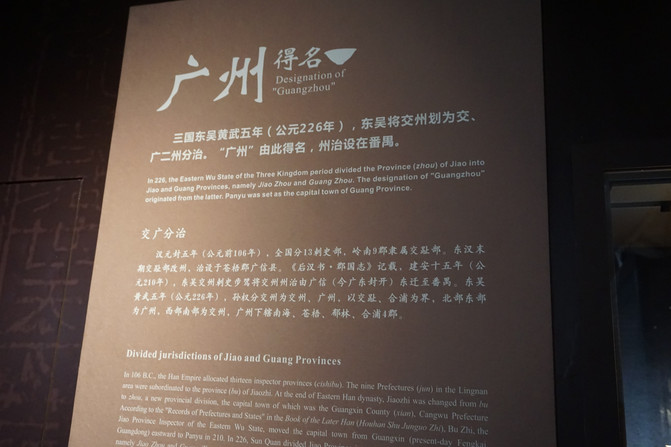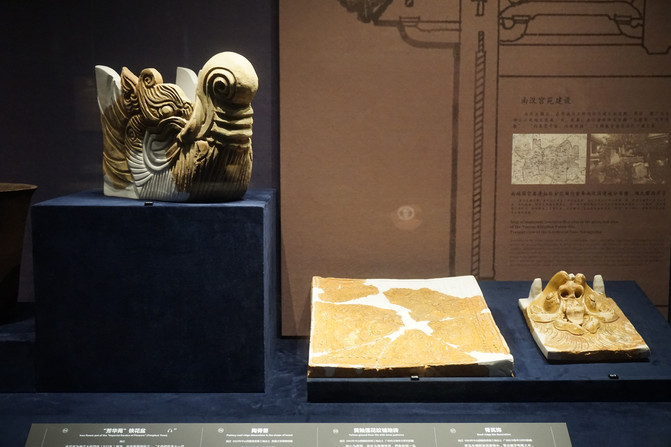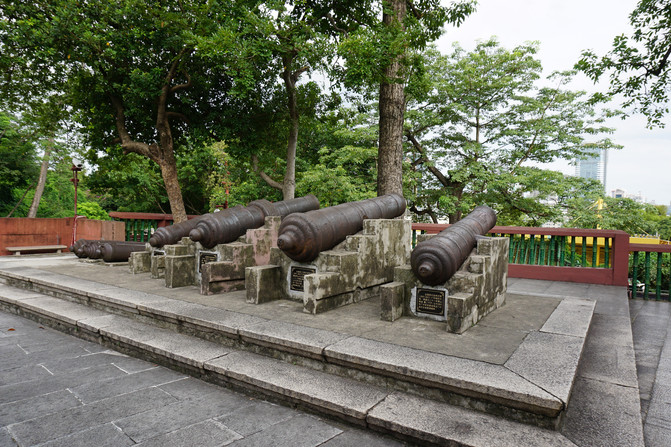See Guangzhou again-Guangzhou Museum in Zhenhai Building
Walking time: 2020.7
D1:
Walking method: Self-driving by plane (Nanjing-Guangzhou)
Walking route: Nanhai Temple (Tour time: 1.5 hours, ticket: 15 yuan) Lingnan Impression (Arrived at 16:40, closed at 5 o'clock, unable to enter) Guangzhou University Town Science and Technology Museum (appearance) Foraging on Beijing Road
Check-in: CityNote Sinoo Hotel (Guangzhou Beijing Road Dafosi Park Front Subway Station Branch)271 yuan/standard room
D2:
Walking method: walking, renting
Walking routes: Lu Xun Memorial Hall (1.5 hours, online reservation in advance, tickets are not available), Guangdong Museum (1.5 hours, online reservation in advance, tickets are not available), United Bookstore
Check-in: Beijing Road Sino Hotel
D3:
Walking methods: walking, subway
Walking routes: Nanyue Palace Museum (1.5 hours, no tickets), Yuexiu Park (2 hours, online reservation in advance, no tickets), Guangzhou Museum, Yuehai Tower Foraging
Check-in: Jinzhou Hotel (Guangzhou Yuexiu Park Subway Station Branch) 207 yuan/standard room
D4:
Walking method: walking, renting
Walking routes: Sun Yat-sen Memorial Hall (free tickets for medical staff), Beijing Road, Tao Tao Ju foraging
Check-in: Guangzhou Huamao Guangfu Cultural Hotel 151 yuan/standard room
D5:
Walking methods: bus, taxi, subway, plane (Guangzhou-Nanjing)
Walking route: Shangxia Ninth Street, Xiguan Dawu, Liwan Lake Park, Xintai Le Dining
D3:
Guangzhou Museum:
Address: Inside Hai Building, Yuexiu Park Town, Yuexiu District, Guangzhou
Admission: 10 yuan, free for medical staff
Walking to Yuexiu Mountain Stadium with the Ming City Wall, I was still lamenting that there was such a big stadium on a mountain. I turned around and found that there was also the Guangzhou Museum here. Therefore, it is good not to make the guide too detailed during the journey, as there will often be small surprises along the way. You have to go in and see the museum.

At the ticket office, you can enter the park for free by showing your medical worker ID. But the staff said that the museum would close in twenty minutes, so they advised me to come back tomorrow! I hesitated for two seconds and decided to enter the park. Go and have a look first. If you are particularly interested and don't have enough time, you can come back tomorrow. It's a pity that I didn't go in and have a look first when I passed by today.

There is a big platform up the ladder. In the middle of the platform is this Zhenhai Tower built in the 13th year of Hongwu of the Ming Dynasty (1380). Zhenhai Tower was built by Zhu Liangzu, Marquis of Yongjia, who was guarding Guangzhou at that time, who integrated the three cities of the Song Dynasty into one. The city wall spanned Yuexiu Mountain and the Zhenhai Tower was built at the highest point of the city wall. The current exterior wall of Zhenhai Building is under construction. Fortunately, it does not affect internal visits.

On the left is a stele corridor

The building with red walls and green tiles on the right is now a thematic showroom.

The five-story building of Zhenhai Tower has now become the carrier of the Guangzhou Museum, displaying the Guangzhou Museum's basic display,"Guangzhou History Exhibition." The exterior wall is in the maintenance and protection stage, but it does not affect interior visits. As the closing time is approaching, many exhibition halls have already turned off their lights and are ready to close. In order to cooperate with their closure, I took big steps and went straight to the fifth floor first, visiting from the fifth floor to the first floor.

The fifth floor introduces the modern history of Guangzhou, which is the sixth part of the exhibition. Here, starting from the impact of the Opium War on Guangzhou, we introduce people with lofty ideals who face the impact of the West and actively learn from Western technology, systems, and culture.

The focus is on showing the history of the people of Guangzhou, under the successive leadership of Sun Yat-sen and Communist Party members, through the explorations and attempts of the Revolution of 1911 and a series of revolutionary movements, and finally ushered in the victory of liberation.

Panorama of the Pearl River coast. Here, we mainly use multimedia to showcase Guangzhou's modern municipal construction and summarize Guangzhou's many "firsts" leading the country.


Looking up from the fifth floor, the "Zhenhai Tower" plaque with red and black characters hangs high above it.

On the fifth floor and the fourth floor, the stairs in Zhenhai Building run left and right.

The fourth floor displays Guangzhou during the Ming and Qing Dynasties, which is the fifth part of the exhibition.

This part reflects that Guangzhou has become a bridge for trade and cultural exchanges between China and overseas countries since the middle of the Ming Dynasty. Through a centralized display of the collection of fine works made in Guangzhou in the Qing Dynasty, it is introduced that Guangzhou benefited from "one-stop trade" in the Qing Dynasty and became China's foreign trade center and an important handicraft manufacturing center outside Beijing and Suzhou.

This display case displays heraldic porcelain customized in Guangzhou by European and American businessmen in the 18th and 19th centuries. These heraldic ceramics have unique shapes and adopt commonly used Western shapes. They have exquisite patterns and have both traditional Chinese craftsmanship characteristics and European fine and elegant decorative styles.

Exquisite and gorgeous gold tripod with chiseled body and enamel during the Qianlong period of the Qing Dynasty.

Hunqiu instrument and the astronomical instrument Qizheng instrument developed by Mr. Zou Boqi

This group of Qing Dynasty Tongcao watercolor paintings depicting the life of beautiful women in Guangzhou during the Qing Dynasty and the flowers and butterflies in Lingnan were donated by British friends. These general grass paintings have brought back this art that has been difficult to find in Guangzhou, its birthplace.

During this period, the scale of Guangzhou's Urban area continued to expand, the city expanded again, and diverse cultures coexisted. After the Ming Dynasty, Guangzhou rapidly developed into a world-renowned city.

The third floor displays the relevant history from the Three Kingdoms, Two Jin Dynasties to Song and Yuan Dynasties, which is the third and fourth parts of the exhibition.

The third part shows the development of Guangzhou during the Wei and Jin Dynasties. The text introduces the name of Guangzhou, as well as the relative stability of Guangzhou and the development of society during the Three Kingdoms, Two Jin and Northern and Southern Dynasties.

The fourth part shows Guangzhou from the Sui and Tang Dynasties to the Song and Yuan Dynasties. It introduces the port and city civilization presented in Guangzhou from the Sui and Tang Dynasties to the Song and Yuan Dynasties.

Guangzhou's prosperous maritime trade was introduced through the display of cultural relics.

Cultural relics are displayed and celebrities from various dynasties are introduced through pictures.

The second floor displays relevant history from the Pre-Qin Dynasty to the Han Dynasty. The first part mainly displays the prehistoric and pre-Qin civilizations of Guangzhou, and focuses on displaying the status of human production and life in Guangzhou during the prehistoric period with the remains of the "four major sites".

The second part shows Guangzhou from the Qin Dynasty to the Han Dynasty. It mainly displays the lives of residents of Nanyue State and the "Panyu" City in the Han Dynasty, highlighting the development of Guangzhou as a Lingnan city in many aspects such as production, life, maritime trade and other aspects.

Showing the living form in Guangzhou

Economic production and food and life were introduced through cultural relics.

Strange three-dimensional model display

pottery boat

Various strange and witty pottery terracotta seat lights

Exhibiting historical relics from the Neolithic, Qin and Han Dynasties, and the Three Kingdoms, Jin and Northern and Southern Dynasties (4000 BC-589 AD) are displayed;

Unearthed cultural relics from various archaeological excavations

Pottery ridge beast from the Southern Han Dynasty, yellow-glazed lotus pattern floor tiles, back tiles

Female figurines wearing long-sleeved pottery clothes in the Eastern Han Dynasty

"Suhar" ship model

In a hurry of twenty minutes, the historic crossing of Guangzhou was completed from the fifth floor to the first floor. The first floor holds thousands of years, looking at ancient and modern times with both eyes. The rough stone tools, mottled bronzes, exquisite ceramics and yellowed historical documents and photos left by my ancestors allowed me to quickly understand the development history of Guangzhou's city over the past 2000 years.

Go down to the preface hall on the first floor, there are large embossed on the walls on both sides.

Walking out of Zhenhai Tower, the courtyard was full of greenery and walked towards the stele corridor on the west side.


This red sandstone groove in the courtyard is the base of the Ming Dynasty stone tablet "Zhenhai Tower Story"

One stele corridor was built in 1964. There are dozens of ancient historical steles in the stele corridor.


The stele corridor is located on the Ming City Wall in Guangzhou.

In addition to stele corridors, there are also gun mounts on the city wall.

The gun stands contained city defense cannons forged in Guangzhou from the Chongzhen period of the Ming Dynasty to the Opium War, as well as steel cannons purchased from the Krupp Arsenal in Germany.





At the corners of the city wall are placed the stone carvings of Dr. Sun Yat-sen's will, the stone ceiling of "Daxin Street" and the cornerstone of the Guangjiu Railway Station Building.

There is a bus with a big pigtail parked next to Zhenhai Building. Everything that seems to be inadvertently displayed on the city wall is actually the history of the city.

The city wall overlooks the Sun Yat-sen Monument on the hill not far away and the Yuexiu Stadium in front of you.

I visited the Guangzhou Museum efficiently, and I was also the last visitor to leave. The Guangzhou Museum can be regarded as an unexpected bonus during the trip! Continue to stroll through Yuexiu Park...
